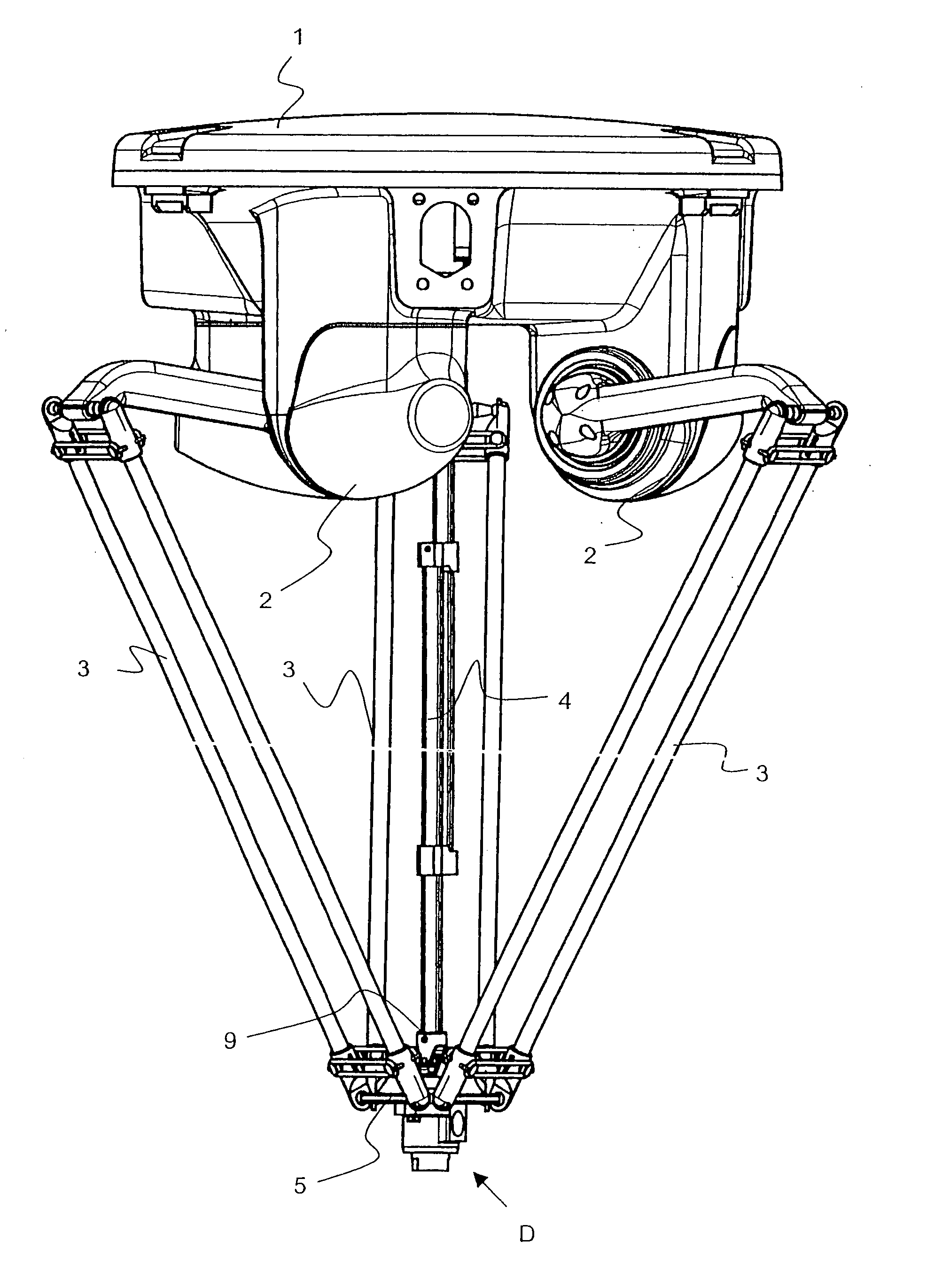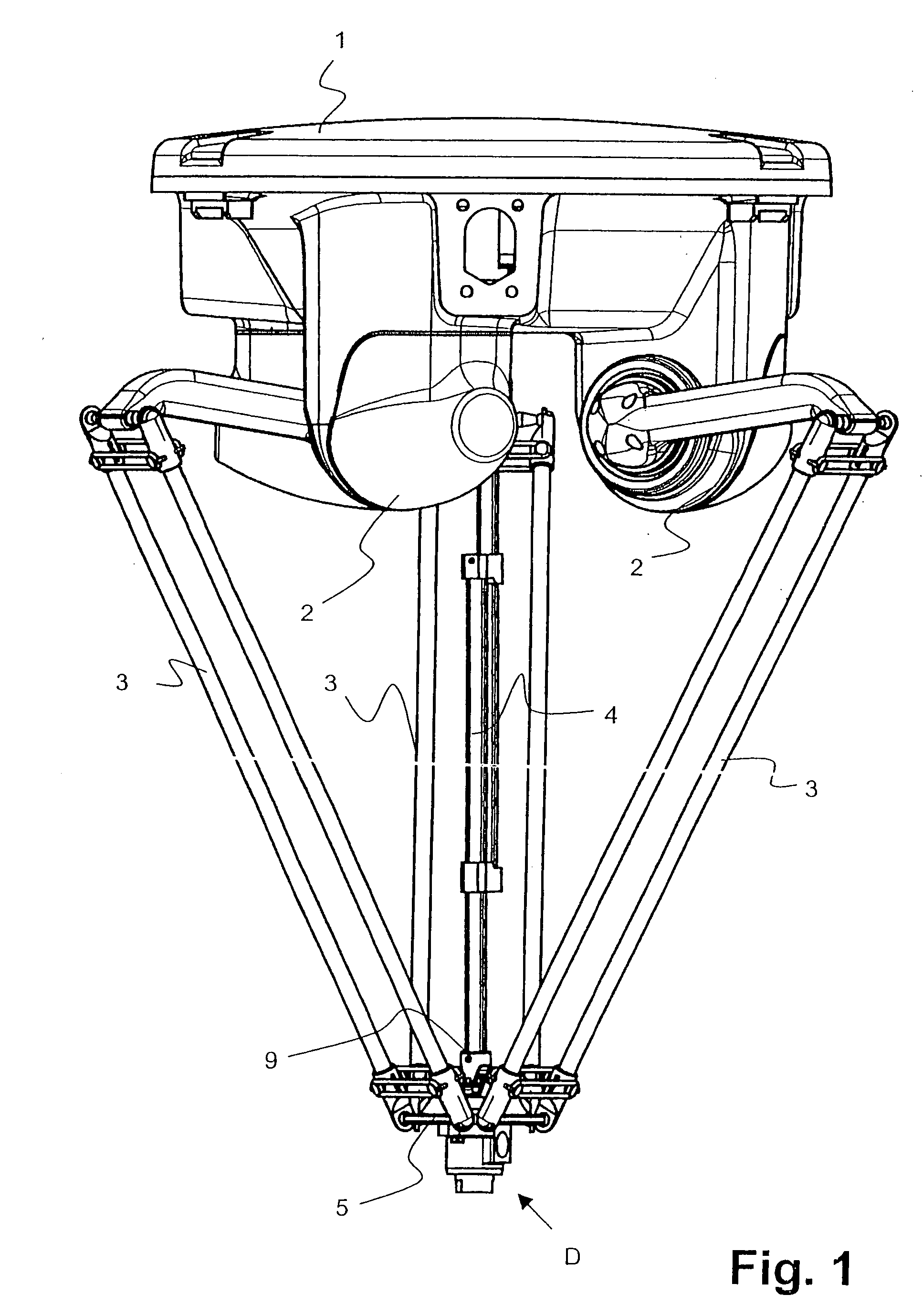Rotary leadthrough of a robot arm
- Summary
- Abstract
- Description
- Claims
- Application Information
AI Technical Summary
Benefits of technology
Problems solved by technology
Method used
Image
Examples
Embodiment Construction
[0019] In FIG. 1, a Delta robot is shown. Except for the rotary leadthrough D described hereinafter, it is equivalent to the known Delta robots and will therefore be described only briefly below.
[0020] It has a platelike basic element 1, on which three control arms 3 are supported so as to be pivotable or rotatable. The three control arms 3 can be moved individually by means of motors 2. The free ends of the control arms 3 are pivotably connected to a carrier element, in this case a carrier plate 5. The Delta robot also has a fourth axle 4, which is often telescoping or otherwise changeable in length. This fourth axle 4 is connected to the rotary leadthrough D via a joint 9, in particular a cardan joint or a universal joint. A grasping element, not shown, can be secured to the rotary leadthrough D on the side of the rotary leadthrough D diametrically opposite the fourth axle 4. The type of grasping element depends on the field in which it to be used. Examples of grasping elements a...
PUM
 Login to View More
Login to View More Abstract
Description
Claims
Application Information
 Login to View More
Login to View More - R&D
- Intellectual Property
- Life Sciences
- Materials
- Tech Scout
- Unparalleled Data Quality
- Higher Quality Content
- 60% Fewer Hallucinations
Browse by: Latest US Patents, China's latest patents, Technical Efficacy Thesaurus, Application Domain, Technology Topic, Popular Technical Reports.
© 2025 PatSnap. All rights reserved.Legal|Privacy policy|Modern Slavery Act Transparency Statement|Sitemap|About US| Contact US: help@patsnap.com



